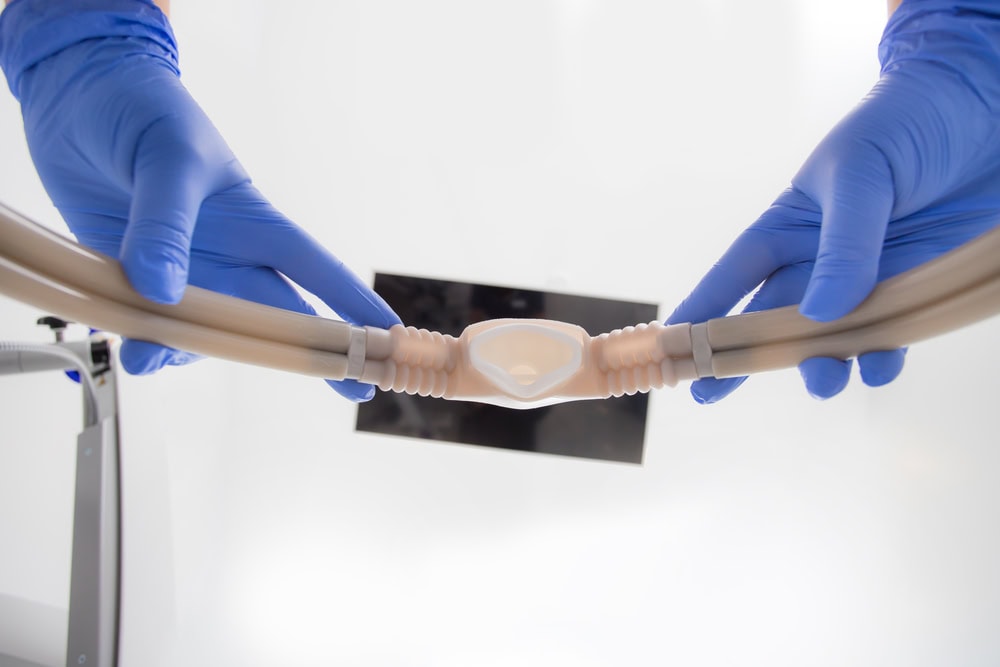At New Smile Avenue, we understand how important it is to have a healthy, beautiful smile, and that’s why we’re here to help. Our journey to dental bridges offers a reliable and long-lasting solution to replace missing teeth or close gaps between teeth.
A bridge is a prosthetic device that is used to restore lost teeth with the help of natural teeth or implants and is a great way to improve one’s oral health. We offer a comprehensive range of materials and procedures to ensure that our patients receive the highest quality care.
We understand that the process may be intimidating, but our experienced team of professionals will guide you every step of the way. Come join us on the journey to a new smile avenue.
What Is a Bridge
A bridge is a common dental prosthetic device designed to replace one or more missing teeth. It consists of a false tooth or teeth held in place by two abutment teeth on either side of the gap. As a result, it is able to provide the function and appearance of natural teeth. Dental bridges can be made from a variety of materials, such as porcelain, gold, or a combination of the two.
There are several types of dental bridges available. The traditional bridge is the most common type and consists of a false tooth held in place by crowns placed on the abutment teeth. A cantilever bridge is another option and is similar to a traditional bridge, but only one abutment tooth is used to hold the false tooth in place. In some cases, dental implants may be used as abutment teeth, providing a more secure and natural-looking result.
When it comes to replacing a missing tooth, a dental bridge can be an excellent solution. It helps improve the overall appearance of your smile and, depending on the materials used, can last for many years. It also helps to maintain healthy teeth and gums by preventing the remaining teeth from shifting.
Benefits of a Bridge
One of the major benefits of continuing the journey to dental bridges is the restoration of a natural-looking smile. Bridges provide a permanent replacement for missing teeth, either by a temporary bridge or a permanent bridge. With a permanent bridge, the adjacent teeth support an artificial tooth, which is cemented in place. Implant-supported bridges, which are held in place with dental implants, are also available. Those who opt for a temporary bridge can choose from resin-bonded bridges or dental cement bridges.
No matter which bridge you choose, it is important to maintain regular dental visits to ensure proper oral health. Without proper dental visits, dental bridges may not be able to last as long as they should. Additionally, all bridges require a dental laboratory to create the artificial tooth, as well as any other necessary components.
Dental bridges are a great way to restore a natural-looking smile, and the benefits are worth considering. Not only do they restore the aesthetics of your smile, but they also help to maintain oral health. With proper dental care and maintenance, dental bridges can last for many years, providing a beautiful, lasting smile.
Materials Used
Where are the materials used in dental bridges sourced from? Dental bridges are a common dental treatment that can provide a patient with a replacement tooth or teeth. The materials used for dental bridges are sourced from various locations, depending on the type of bridge and the individual needs of the patient. Generally, the materials used in dental bridges include porcelain, ceramic, metal alloy, or combinations of the three.
Dental bridges are used to replace teeth that are missing due to disease, trauma, or decay. The bridge is composed of one or more prosthetic teeth that are held in place by teeth adjacent to the missing teeth. Depending on the patient’s needs, the most suitable type of bridge can be selected.
Ceramic bridges are made from a porcelain framework, which is then bonded to the adjacent porcelain-covered crowns. This type of bridge is often used in the front of the mouth because it provides an aesthetically pleasing result. Porcelain-fused-to-metal bridges are more durable and are often used in the back of the mouth.
Partial dentures are another type of bridge made from a metal framework that supports the prosthetic teeth. The framework is designed to fit comfortably in the patient’s mouth and the prosthetic teeth are attached to it.
No matter which type of bridge is chosen, the materials used in making dental bridges are designed to provide the patient with a natural-looking result that is also strong and durable. Dental bridges can be an effective treatment option for patients who are missing a few teeth and can provide them with a healthy and strong smile.
Procedure Overview
The procedure for dental bridges involves a few steps and can be done in one or multiple visits to the dentist.
The first step in the dental bridge procedure is preparing the teeth that will be receiving the bridge. This includes shaping the existing teeth and taking impressions of the teeth to ensure a proper fit for the bridge. Depending on the type of dental bridge, temporary crowns may be placed on the teeth while the permanent bridge is being made. In some cases, additional treatments such as a root canal may be necessary to ensure the bridge is securely fastened.
Once the bridge is ready, the dentist will place it on top of the teeth and ensure the fit is correct. The bridge is then secured in place with permanent cement. This creates a long-term solution for missing or damaged teeth, restoring the smile and allowing for normal eating and speaking.
Professional cleanings and regular visits to the dentist are essential to maintain the dental bridge. Dental care and regular check-ups allow the dentist to ensure the bridge is functioning correctly and to look for any signs of decay or other damage.
Dental bridges come in a variety of styles, including tooth-supported bridges, cantilever dental bridges, and implant-supported dental bridges. Each type has its own benefits and drawbacks, and the dentist will be able to recommend the best option for the patient’s needs.
Preparation
Building upon the procedure overview, preparation for dental bridges is the next step in the journey. Oral health is a major consideration for this dental work, as a bridge is being used to bridge the gap between two or more missing teeth. Thus, proper oral hygiene is very important to ensure the bridge will remain in place. This includes regular dental appointments to ensure any issues with the bridge or oral health is addressed immediately.
The type of bridge involves the number of teeth involved, whether it is a single tooth or multiple teeth. The most common type of bridge used is the traditional bridge, which consists of a replacement tooth and two metal wings. This type of bridge is attached to the healthy teeth on either side of the gap, with the bridge itself replacing the missing tooth.
In addition to the aesthetic appeal of a dental bridge, there are also many health benefits. A dental bridge helps to maintain the shape of the face, prevents the teeth from shifting into the empty space, and helps to maintain gum health. The bridge also helps to restore chewing and speaking ability, both of which are important for a healthy lifestyle.
Finally, it is important to ensure proper care of the bridge to ensure its longevity. This includes regular brushing and flossing, avoiding certain foods that can affect the bridge, and avoiding the use of tobacco products. With proper care and maintenance, the bridge can last for many years.
Placement
Once the preparation is complete, the next step is to place the bridge correctly. The placement of a bridge is a crucial part of the restorative treatment, as it is a permanent solution that requires experienced dentists and modern dentistry.
The bridge is made of metal alloys or other metal materials, such as metal clasps or a metal frame, which are then connected to porcelain wings. This allows the bridge to blend into the natural smile. The treatment plan is designed to provide a long-term, restorative solution for a person’s missing teeth.
The experienced dentists at the dental office carefully place the bridge in the patient’s mouth. This is done with special tools and precision to ensure the bridge is placed correctly. The dental team then makes any necessary adjustments to ensure the bridge fits the patient’s mouth properly and securely. It is important for the bridge to fit properly so the patient can chew and speak normally without any discomfort.
The placement of the bridge is the final step of the process, and once it is complete, the patient can have a fully restored smile. The bridge is a permanent solution, providing the patient with a healthy and natural-looking smile. The bridge also helps to protect the remaining teeth from further damage.
The placement of a bridge is a precise and detailed process that requires the expertise of experienced dentists and modern dentistry. The bridge is a permanent solution that can greatly improve a person’s oral health and provide them with a beautiful smile.
Aftercare
Once the bridge is successfully placed, proper aftercare is necessary to ensure the bridge lasts for many years and the teeth and gum tissue are in optimal condition. Patients should maintain good dental hygiene practices, such as brushing twice a day and flossing at least once a day, to keep their bridge and surrounding teeth healthy. It is also important to visit a dental practitioner regularly, usually every six months, for checkups and cleanings.
The Cleveland Clinic suggests that patients avoid eating hard and sticky foods with their bridge, as these can damage the appliance, and instead opt for softer foods. The bridge may take some time to adjust to, and patients may notice that their chewing function is different.
If any part of the bridge becomes loose, damaged, or falls out, patients should contact their dental practitioner immediately. Patients may need to have the bridge repaired or replaced, depending on the severity of the damage. To protect the bridge from damage, patients should consider getting a floss threader to help with flossing.
In some cases, dental insurance may cover the cost of the bridge and associated dental procedures, such as tooth extraction, but it is important to check with the insurance provider beforehand. With proper care, dental bridges can last for many years and provide a strong and reliable tooth replacement option.
Key Takeaways
Dental bridges offer a reliable and long-lasting solution to replace missing teeth. Bridges can be made from a variety of materials, and the procedure can be completed in a relatively short amount of time.
Aftercare is essential to ensure the bridge remains in place and the surrounding teeth remain healthy. With proper care, a bridge can last for many years, providing a beautiful and functional smile.
If you’re looking for a reliable and long-lasting solution to replace missing teeth, look no further than SmileWorks Dental – Ballarat at Ballarat Central, VIC. Our experienced Dentists at Balarat use the latest technology and materials to help you achieve the perfect smile. Contact us today to book your appointment and find out how we can help you.




